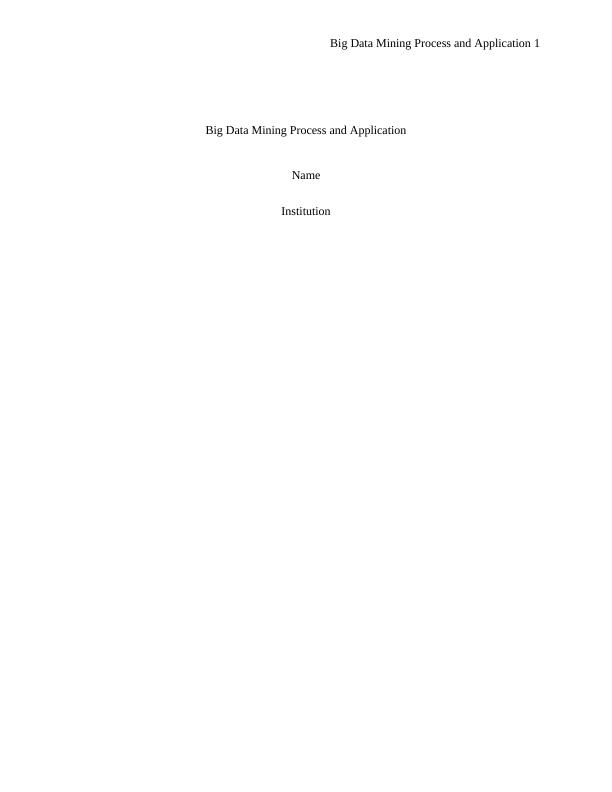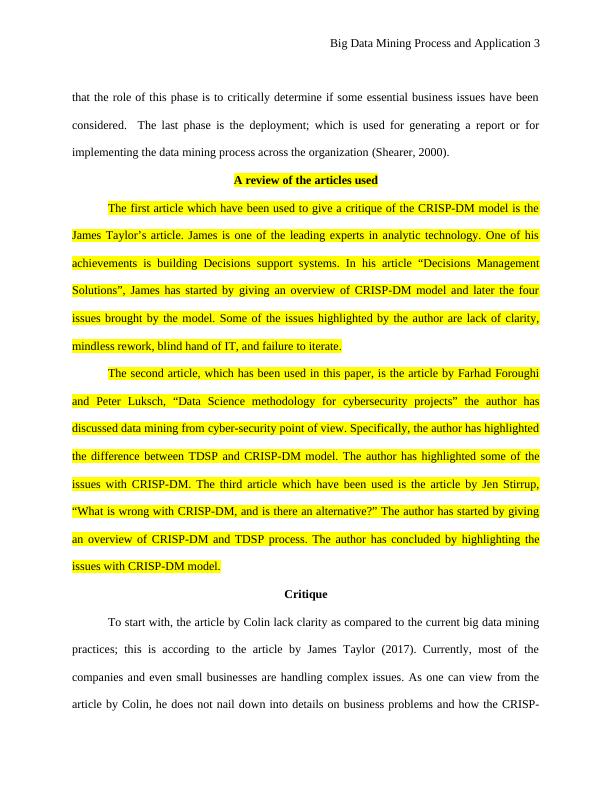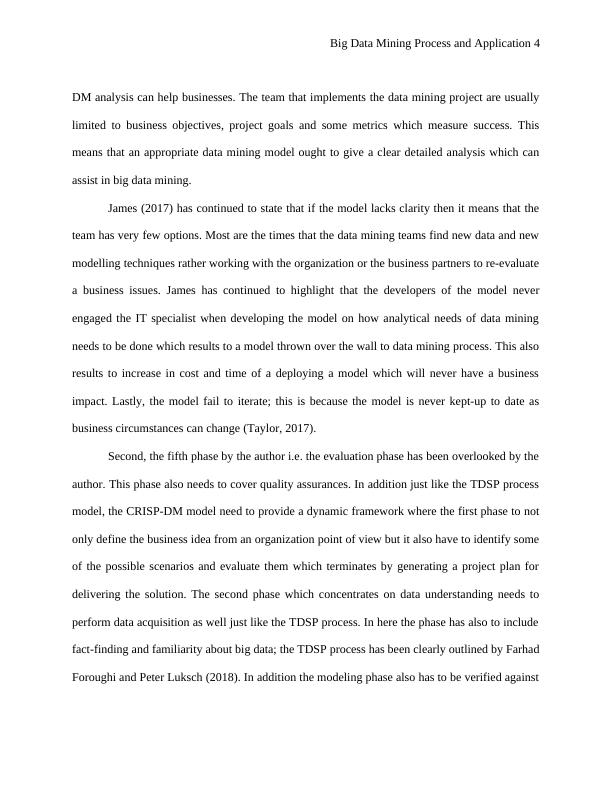Big Data Mining Process and Application
Write a critique of a journal article on the CRISP-DM model and offer a critical analysis of a 'Big Data' mining problem domain.
13 Pages3887 Words124 Views
Added on 2023-04-23
About This Document
This article discusses the process of big data mining and its applications. It critiques the CRISP-DM model and provides a critical analysis of big data mining problems. The article also mentions data mining tools like Apache Mahout and Weka. Subject: Computer Science, Course Code: NA, Course Name: NA, College/University: NA, Document Type: Article, Assignment Type: NA
Big Data Mining Process and Application
Write a critique of a journal article on the CRISP-DM model and offer a critical analysis of a 'Big Data' mining problem domain.
Added on 2023-04-23
ShareRelated Documents
End of preview
Want to access all the pages? Upload your documents or become a member.
Data Modelling.
|4
|484
|158
B9DA103 Data Mining - CRISP-DM model
|6
|1587
|14
Business Intelligence Project on Australian Weather Data using Rapid Miner and Data Warehouse Architecture Design
|26
|4567
|302
Planning for a project by applying the CRISP-DM framework
|8
|1471
|250
Business Intelligence Project on Weather AUS Data
|29
|3445
|100
Data Mining: A Solution for Business Problems
|7
|1117
|413




